Suits come in two basic flavors–single and double breasted–but, beyond that, a suit jacket is one of the most complex tailored items out there, made up of numerous component parts that we may not think about that much. However, each aspect of a suit’s design adds something to how it looks on you. In this article, we’ll review the anatomy of a suit, with an emphasis on the important terminology used to describe its various features.
What is a “Suit”?
Though it may seem obvious, it may be worth mentioning first of all that a suit is comprised of a jacket and pants in matching fabric that forms a set, hence its name in French: complet. As Sven Raphael Schneider has explained elsewhere, the modern English word comes from the French suivre, “to follow,” with the pants following the jacket (or vice versa). When I’ve worn a sport coat and non-matching trousers, I’ve received compliments on my “suit,” which is technically incorrect, though as a gentleman, I accept the compliment without correction. One thing this error does reveal is the primacy of the suit jacket–the pants are mostly an afterthought–and we too will focus our attention on the jacket where most of a suit’s defining features are concentrated.
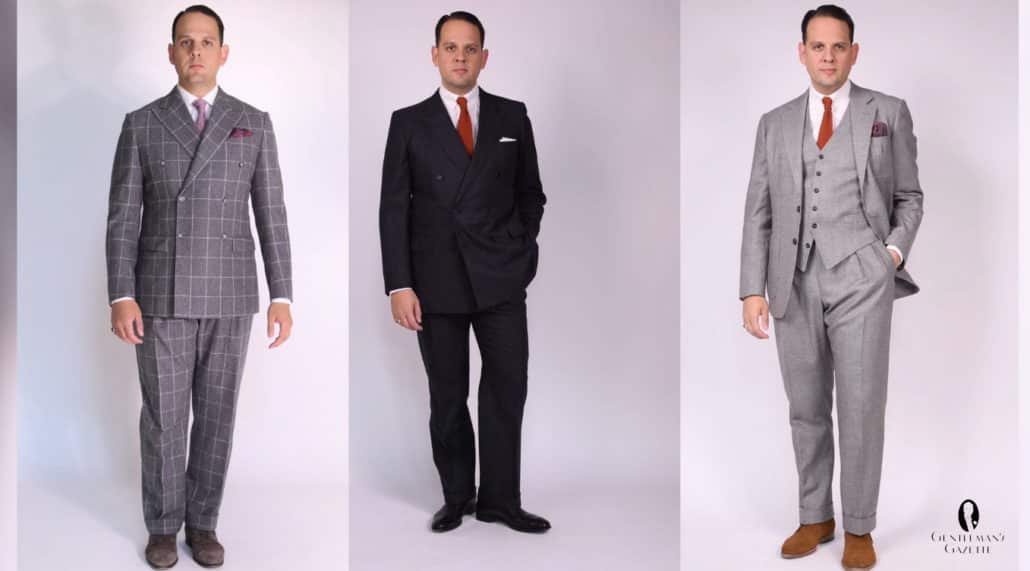
When I first started buying suits as a younger man, I thought they were all essentially the same, and in my mind, I was picturing the typical cut of a suit sold in Macy’s—loose fitting yet quite structured, with padded shoulders and a boxy cut. This never really sat well on my body, so I ended up avoiding suits altogether–until I learned to see all the individual elements that go into their design. Just like many working mechanical parts and design features come together to make a Ferrari look and run like a Ferrari and a Toyota look and run like a Toyota, not all suits are alike. I was amazed to see how a change to just one element of a suit’s design can affect its overall look and style.
Lapels
A suit’s lapels are a major factor in shaping the impression of a suit, as they are a prominent design feature right in the center and close to eye level. Lapels can be defined as flaps of fabric on each side of the suit jacket immediately below the collar and folded back. This “folding back” is best captured in the French name revers, also used in Italian, which emphasizes a turning back of the fabric direction.
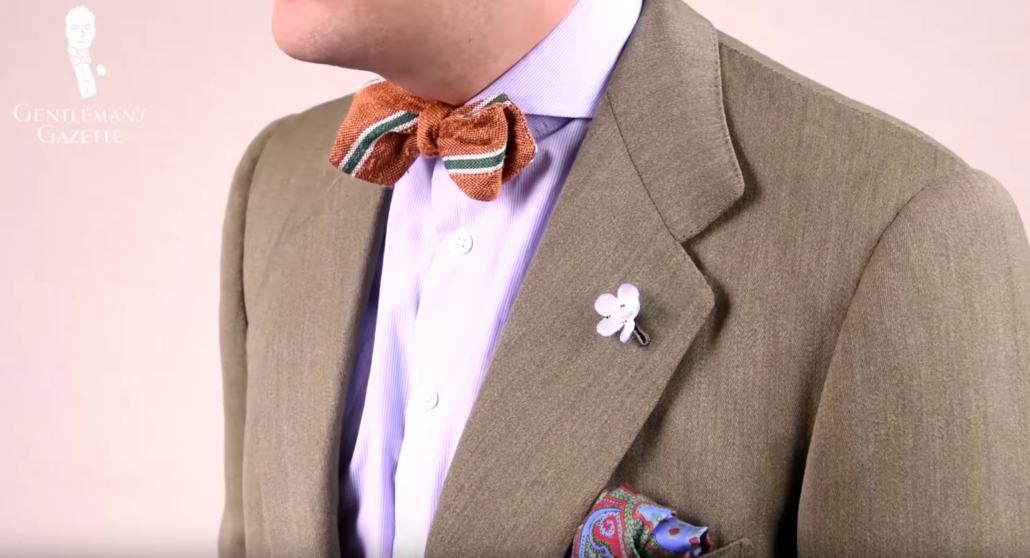

Another way to think about this is that the gorge should rest on your collarbone. Still, gorge height can vary. Suits from the early to mid 20th century tend to have a lower gorge, and it has begun to migrate upwards in recent years toward the top of the shoulder, so it is sometimes barely visible from the front. The latter appear especially in Italian tailoring, including Sartoria Rossi and Cesare Attolini. A low gorge can be seen as either dated or classic depending on your perspective while a high gorge can be considered either rakish because it creates the impression of a broader chest and greater height, or a mere whim of fashion.
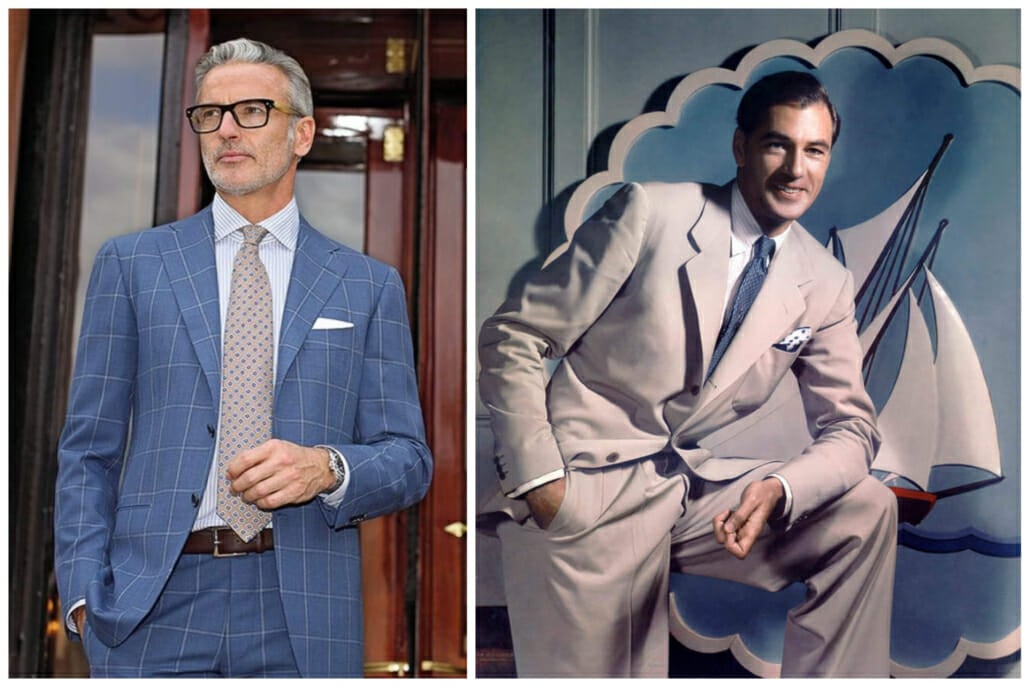
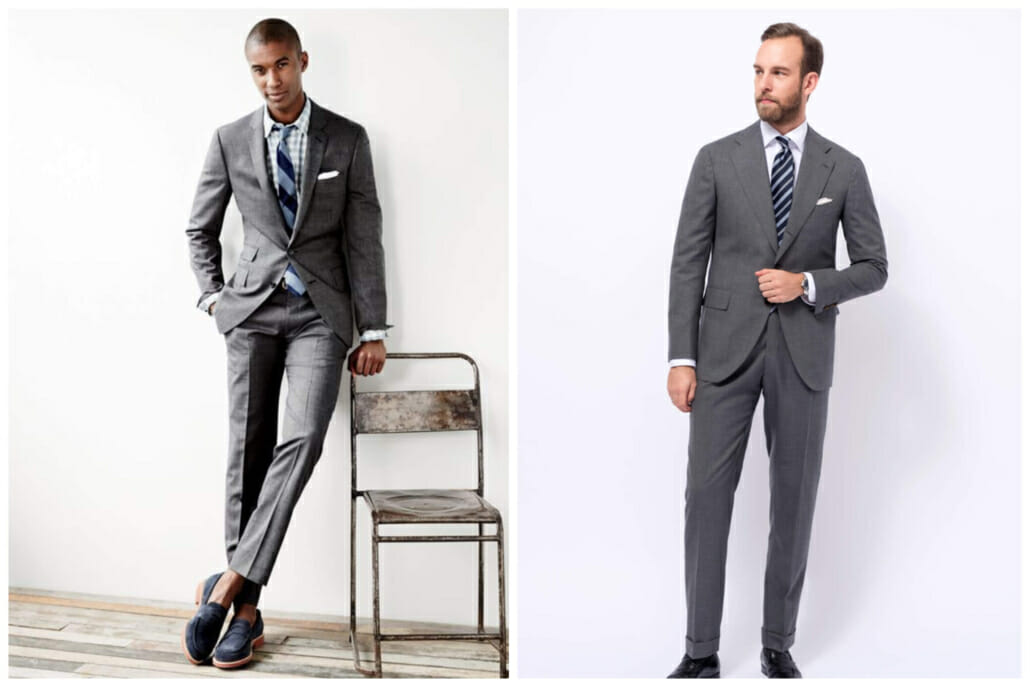
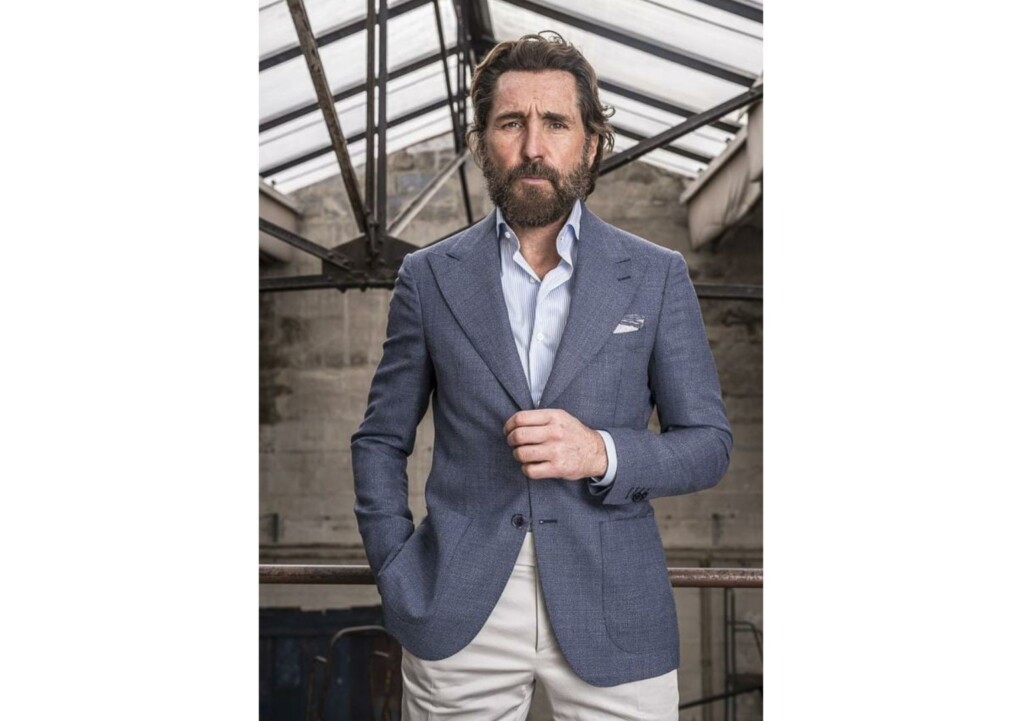
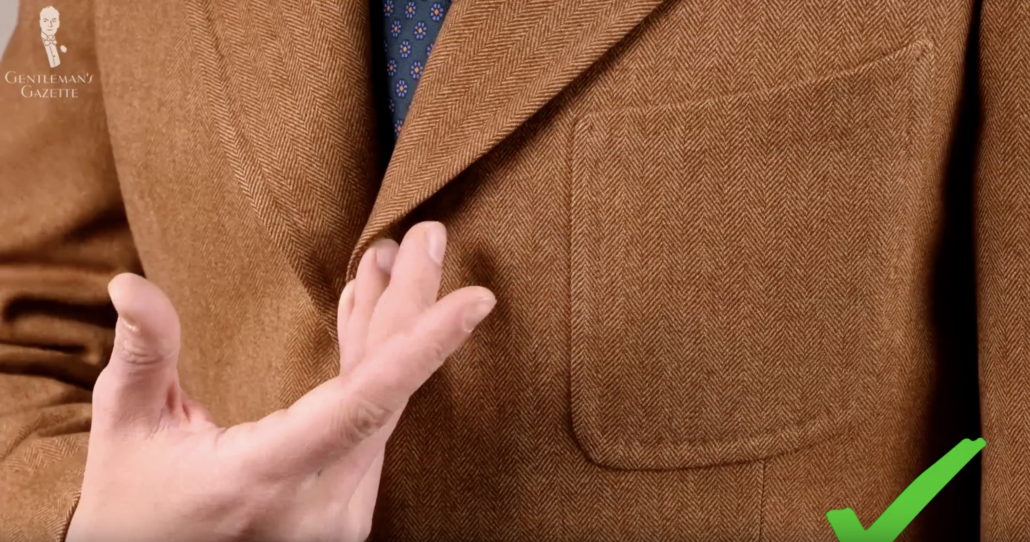
Suit Buttons
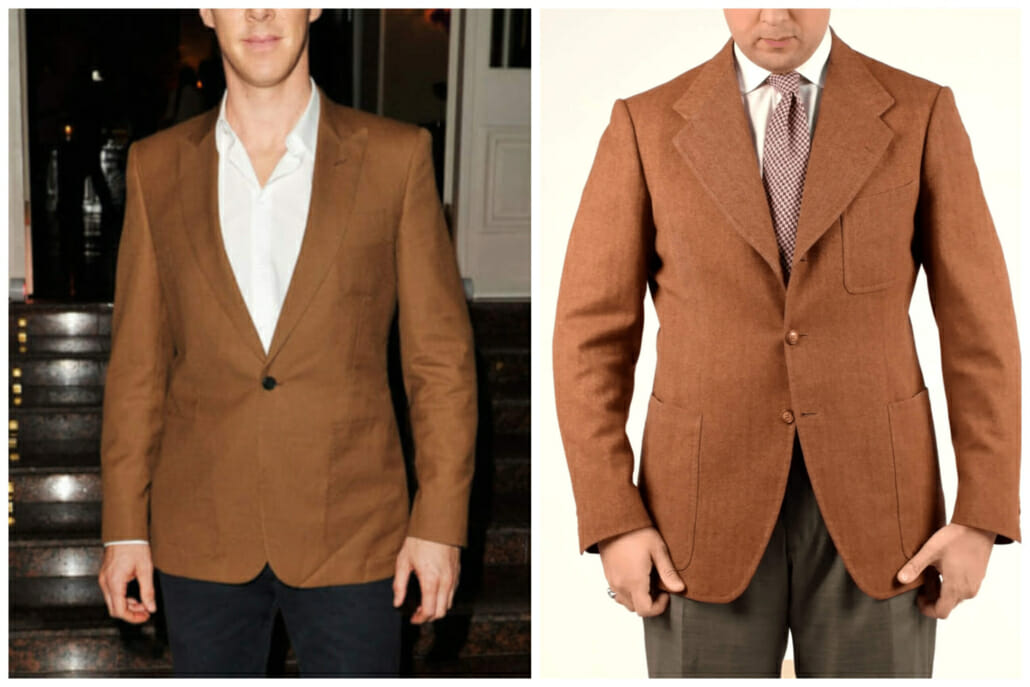
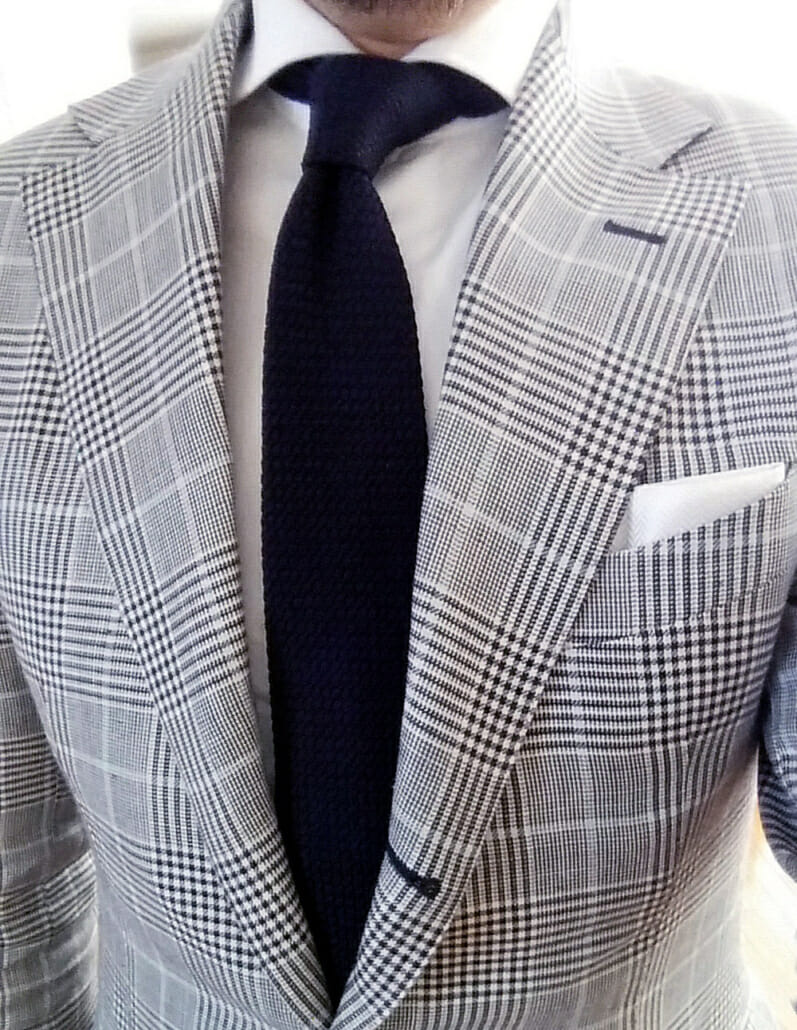
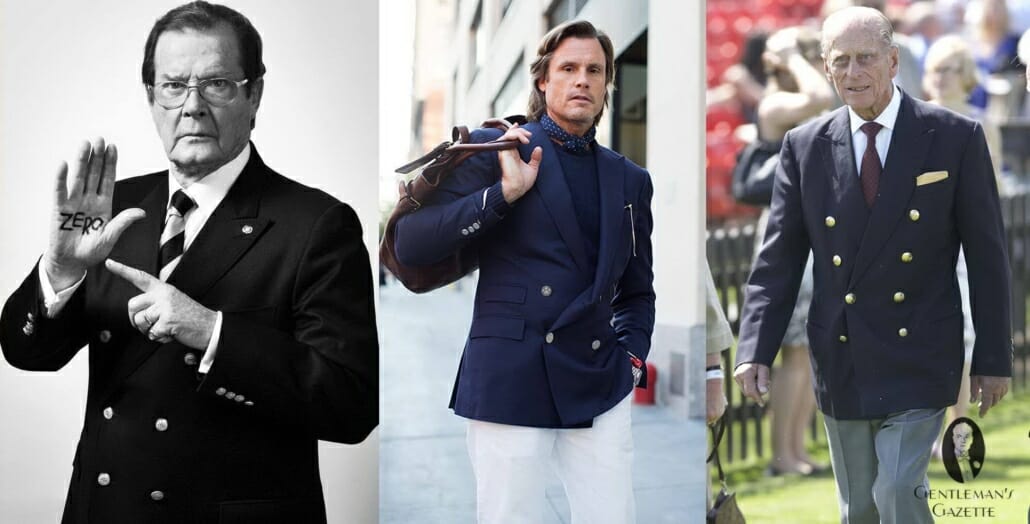
Finally, we include the lapel buttonhole here, as it originally was designed as a way to fasten your collar under your neck as a remedy against bad weather, that is, until the button on the opposite side disappeared from the design. Now, this function is vestigial, but the hole has become the perfect place for a boutonniere flower for a dash of added style. Hand-sewing of the buttonholes, including the one on the lapel, is often a hallmark of a bespoke or otherwise high-quality suit. The most popular is called the Milanese buttonhole because of its origins among tailors of that city; this involves fine stitching of the gimp–the reinforcing trim threads of the buttonhole–resulting in an added bit of ornamentation.
Shoulder Terminology
Much can be done by a tailor with a suit’s shoulders to influence its final appearance. British tailoring traditionally favors a structured shoulder with padding that creates a stronger, masculine look: imagine a pinstripe suit worn by a banker. You will also see this in French power suits and Italian tailoring from Milan and Florence. It is possible to create the illusion of broader shoulders through constructing an extended shoulder, which projects the fabric of the shoulders out a bit further than the arms through the assiduous use of padding.
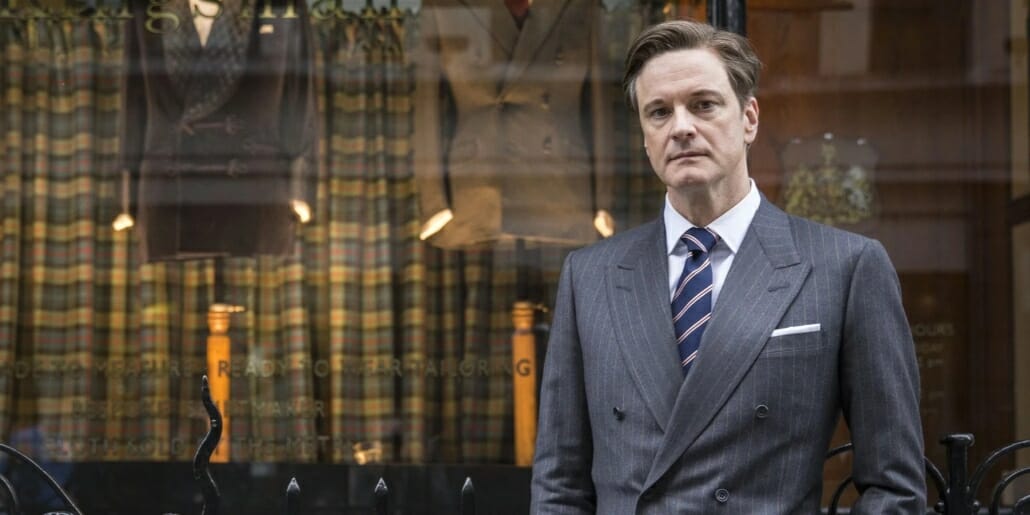
Another option, with light padding, is the roped shoulder of Neapolitan style, where the sleevehead (top of the sleeve) is attached to the armhole a bit higher than the shoulder, creating a ridge or “roping” detail. In Italian, the name is spalla con rollino (“shoulder with a little roll”). Roping can also be part of a pagoda shoulder, which is slightly concave due to some padding, which results in an elegant sweep down from the collar and back up at the arm, like the roof of a pagoda. In Italian, such a shoulder is actually termed a spalla insellata (saddle), as it curves like a saddle. This creates a very bold and unique look, which is not for everyone!
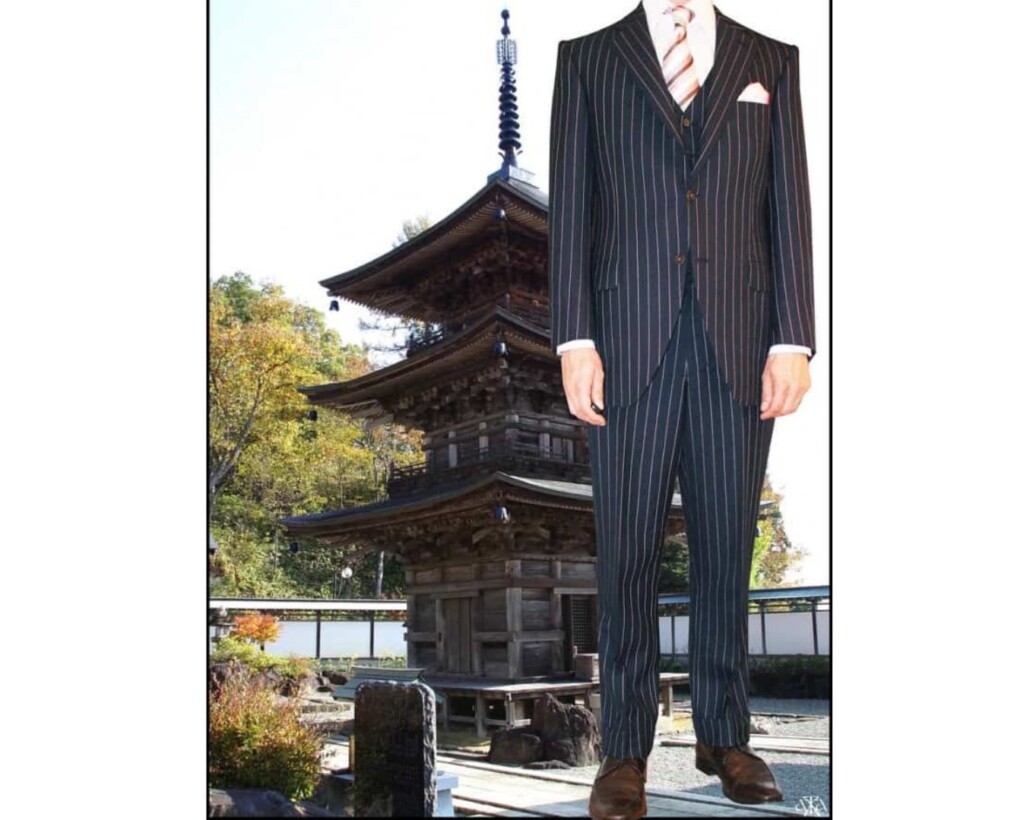
If we go without any padding, we end up with what is termed a soft shoulder or natural shoulder also most typically seen in Neapolitan tailoring. The result is a more relaxed look that Bloomberg has called “risky trend” if you work in a strict business environment but ideal to raise business casual to a new level or for weekend wear. The absence of padding creates a spalla camicia (shirt shoulder), where the arm of the suit jacket lies like a shirt sleeve, which, of course, is also unpadded.
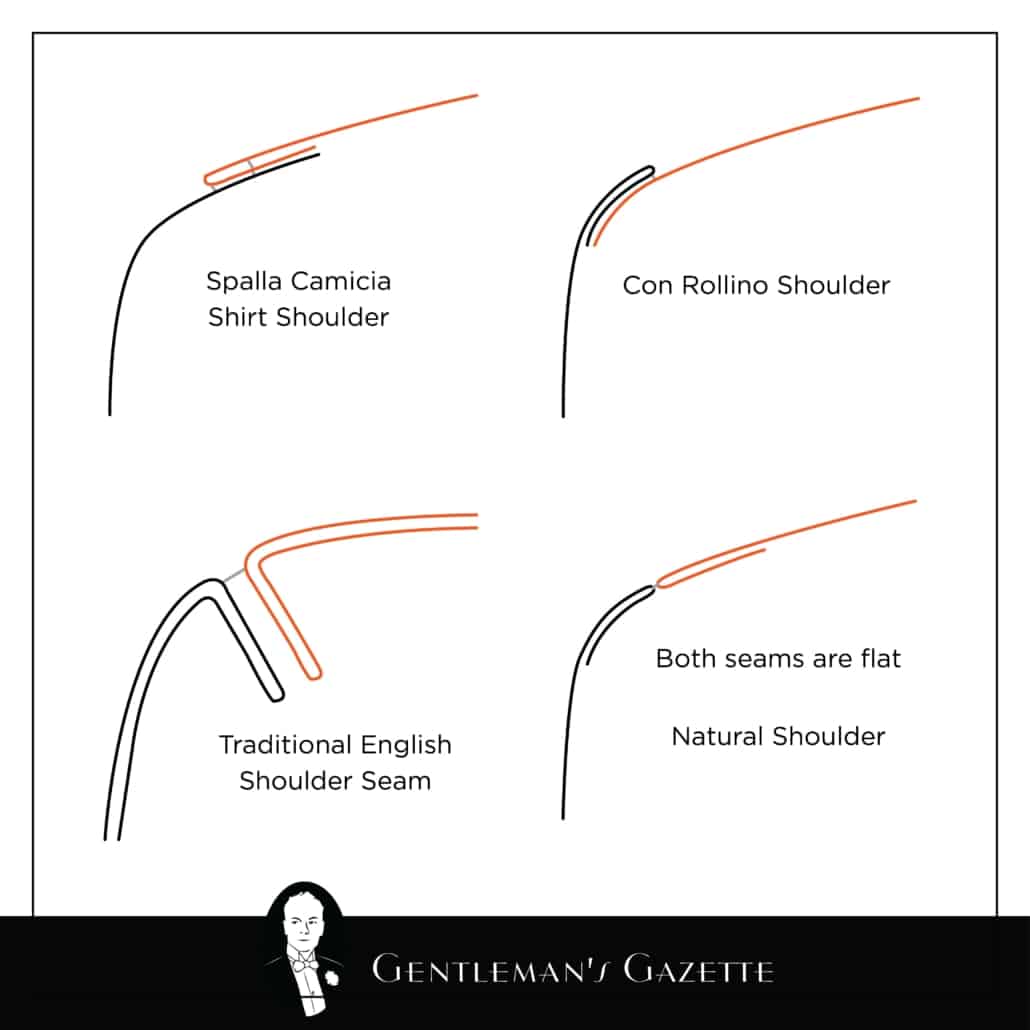
All soft Neapolitan shoulders, including those with light padding, can also feature additional shirring of the sleevehead (called a mappina or “little rag”). These are little puckered pleats that show the tailor’s handwork and are evident in most images of spalla camicia suit jackets.
Pockets
Every suit jacket will have at least two kinds of pockets. One, on the upper right side, is the breast pocket, into which you can (and should) place a pocket square. Again, the Neapolitan tailors have done something unique here, creating a breast pocket that is curved like a little boat (barchetta) for a unique hit of style.
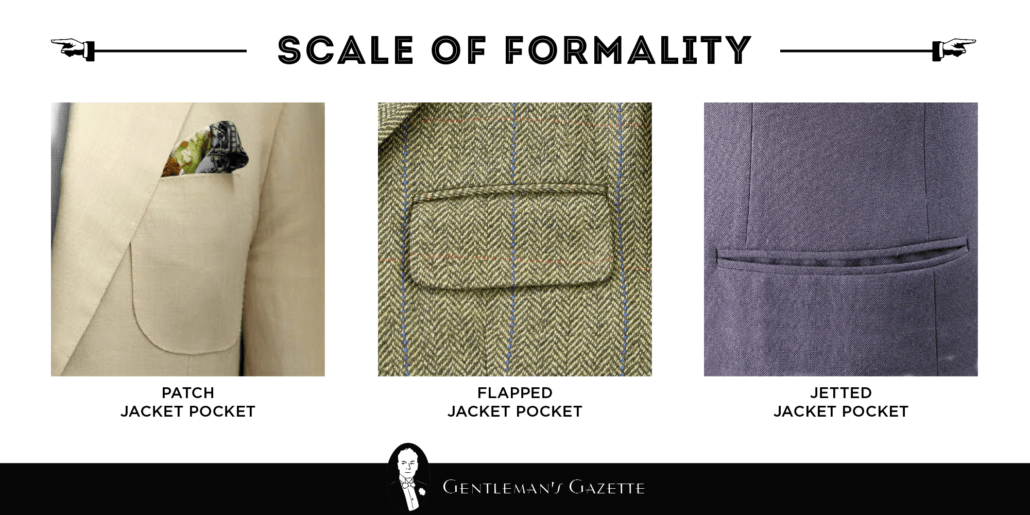
In terms of the larger pockets, there are three possibilities, and which one you have plays a key part in determining how casual or formal a suit is. First, we have patch pockets, which are sewn onto the outside of the suit as visible patches; these immediately signal a suit is more casual, perhaps a summer linen. These may also appear as a breast pocket, which is really informal on a suit. Flap pockets are hidden beneath the surface of the suit jacket except for a flap of cloth covering them. These are the most common or default suit pocket type. Third, you might encounter jetted pockets, which are also beneath the surface of the jacket but have no covering flap. These can appear on suits, as they are highly formal, but are more common on dinner jackets. When you buy a new suit, your pockets will be basted or sewn shut. As the stitching is hidden, some men keep the pockets closed to avoid deforming or warping the pockets by putting things in them, especially patch pockets.
On some flap pocket suits, you will also find a third, slightly smaller, ticket pocket on the left side above the regular flap pocket. This was originally designed to hold train tickets but can be used for various small items.
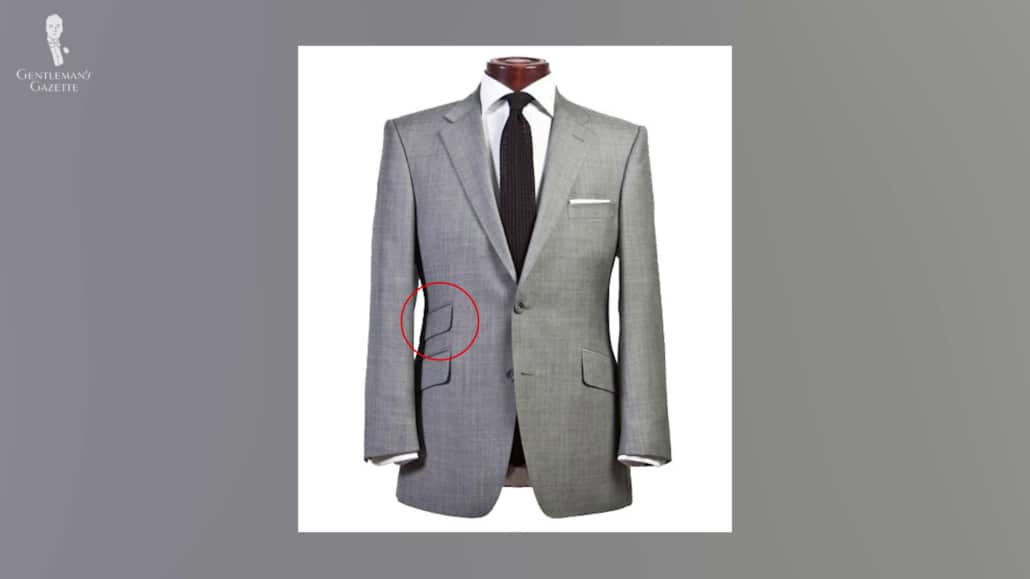
The Body Panels of a Suit
Given how much is going on related to the shoulders, lapels, buttons and pockets on a suit, it is easy to overlook the body panels themselves, which can also contain variations. A primary consideration is how much fabric there is in the chest area, also known as the drape. A suit jacket with a lot of drape has a fuller cut with more room in the chest. The look differs considerably from the more fitted suits that are in style now but have returned at places like The Armoury and Ring Jacket because suits with drape are seen as more laid back as well as comfortable.
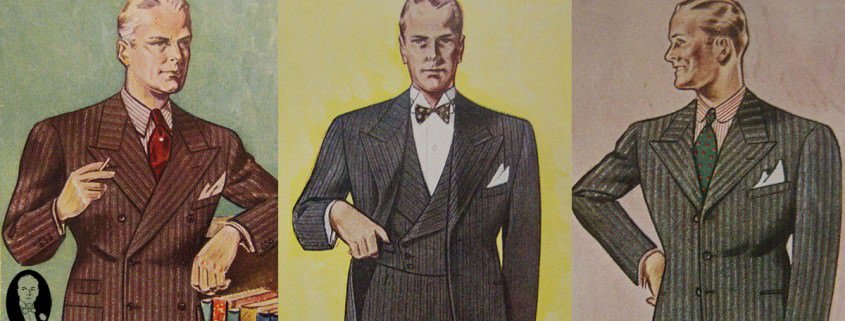
Also on the chest, you are likely to have darts–vertical seams running down each side of the panel, usually ending above the side pockets. They’re designed to add some contouring to the shape of the suit jacket and are present in most modern suits unless you have a true American sack suit, which is meant to lie loosely on the torso, like a sack, truly the antithesis of contemporary suiting style.
Moving down the jacket, we have the question of waist suppression. As the name suggests, this is how much the waist area of the suit is tapered in, creating the impression of wider shoulders by slimming the waist. Waist suppression is related to drop, which is a number indicating a difference between the size of your suit jacket and the waist size of your suit pants. For example, if you have a 40 jacket size and a 34 waist size, this is a standard “drop 6” suit. If the suit is cut slimmer, you may see it referred to as a “drop 7” or even “drop 8,” the latter being a 40 jacket and a 32 waist. Even though the number includes consideration of the pants size, the jacket itself in a drop 7 or drop 8 suit will be slimmer than one in a drop 6.
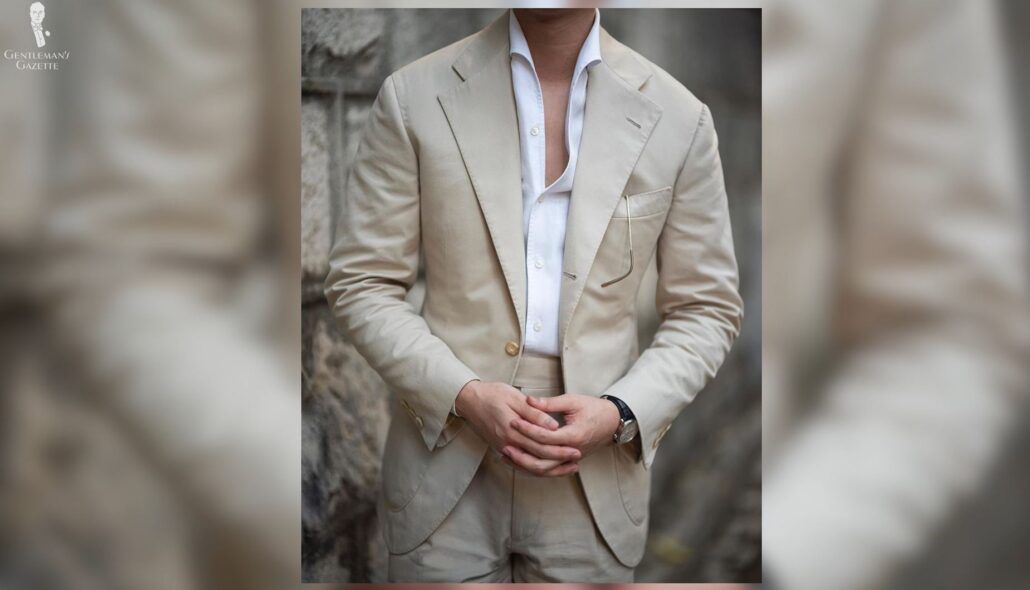
At the very bottom of the suit, we have the quarters, the two flaps of the jacket that meet at the waist button. These can be either open or closed, meaning the flaps can lie nearly straight down (closed quarters) or spread apart in a “flyaway” or “cutaway” fashion (open quarters). The effect of open quarters is to make the lower body look wider, so suits with this feature may be ideal to balance out very broad shoulders. On the other hand, closed quarters maintain emphasis on the shoulder because the hip area stays narrow.
Taken together, the quarters form part of the suit skirt, which comprises all of its lower half. On the back of the skirt there would usually be one or more vertical slits, known as vents. These likely originated to enable a jacket to sit well when riding on horseback. Nowadays, they serve the same purpose of keeping the back of your suit from rumpling wherever you sit, and, for all intents and purposes, you’d want to choose a double vent rather than a single center vent or none at all. Besides keeping your suit looking neater when you sit, a double vent keeps your rear end covered if you put your hands in your suit pockets. What’s more, a single vent is usually a hallmark of a cheap suit because they are less expensive to make. The only time you should have something other than a double vent is when wearing a dinner jacket or tuxedo, which is usually ventless because this creates a sleek, streamlined silhouette. Of course, you can have the same slimming effect if you buy a ventless suit, but you would have to be willing to sacrifice the advantages of having vents.
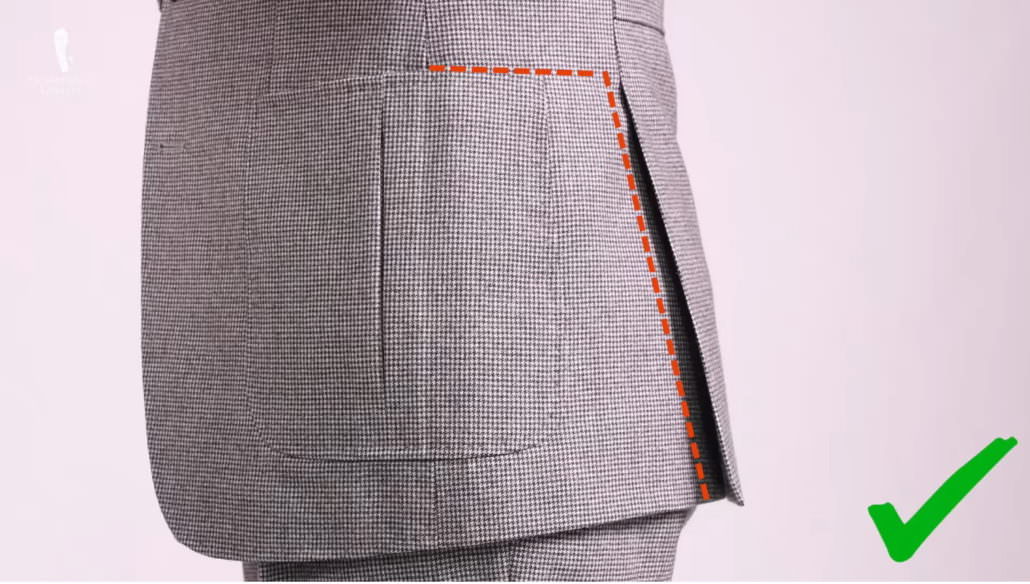
The Hidden Bones of a Suit
As with human anatomy, some of the anatomy of a suit lies beneath the surface. First, there is the lining, which should be made from cupro, a natural material, rather than polyester. Bemberg is another name you may hear related to lining; it’s just a specific high-quality brand of cupro. The lining adds warmth as well as structure to a suit jacket, helping it hang well on the body, smoothing it out by placing a thin layer between the suit fabric and your shirt. Gents with dandy style may choose linings in colors that contrast that of the suit while adding panache. Since lining does add thickness, summer jackets often contain less lining and are either half lined (top, side panels and sleeves), quarter lined (top and sleeves), or even totally unlined, depending on how much there is on the inside. Usually, regardless of how little overall lining there is, the sleeves of the jacket would remain lined for ease of slipping the jacket on and off.
While you can see the lining of a suit, the canvas is invisible, a layer made of wool and horsehair (for stiffness) that sits between the suit fabric and the lining. The purpose of the canvas is to help the suit hang optimally and conform it more to your form. In fact, you’ll often hear it said that canvas actually improves the look of a suit over time as the heat of your body shapes it to fit. The canvas is stitched loosely in between layers so that it moves with you.
Similar to the lining, you can have a suit that is fully canvassed or half canvassed. The former covers both front panels of the suit and the lapels. A half canvas covers just the upper chest and lapels; it doesn’t extend down to the quarters. The tailoring work involved with canvassing is intensive and costly, so full canvas will be more expensive. Cheaper suits will have only a fused interlining that is glued in between the suit fabric and lining, which has a tendency to warp and bubble over time due to delamination (unsticking of the glue). Thus, it is crucial to invest in a suit that is at least half-canvassed and avoid fusing.
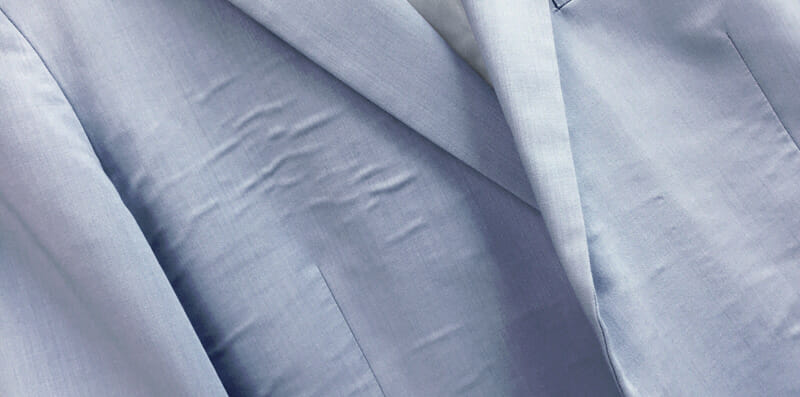
Conclusion
Once you have knowledge of what makes up a suit and the vocabulary to describe these features, you can choose a suit that suits you—especially in terms of your age and body type. It takes some time to see the elements when you begin the process of wearing tailored clothes, but learning about them is the first step to looking and feeling your best in a suit. It is important to observe that the various choices in the design of a suit not only determine its anatomy but help to enhance yours as well.
Outfit Rundown
I’m wearing a three-piece suit that was custom-made for me. It has medium-wide lapels it is a one-button jacket. Because of that, the lapels didn’t need to be that wide. It’s a three-piece suit with a matching vest which is double-breasted and because of that, I wore a jacket usually unbuttoned.
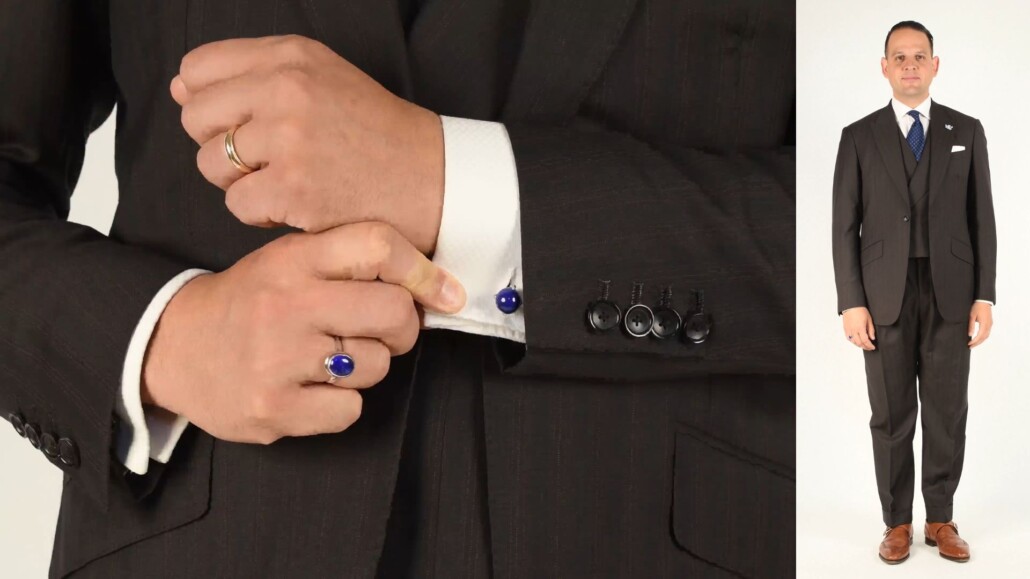
I’m combining it with a white dress shirt with French cuffs and cufflinks in silver and lapis lazuli. They work well with a necktie which is made of English madder silk. The pocket square is a white linen pocket square. It’s very formal and goes well with the suit fabric which has a slight orange stripe which is picked up in the socks which are shadow stripes in orange and charcoal. They provide enough contrast with the shoes and pick it up so it’s a harmonious outfit. I opted for single monk straps with a wing tip from Crockett & Jones on the lapel. I have a Milanese buttonhole which is hard to see though because I’m wearing a boutonniere. On my ring, I’m having a lapis ring in sterling silver which matches the cufflinks.
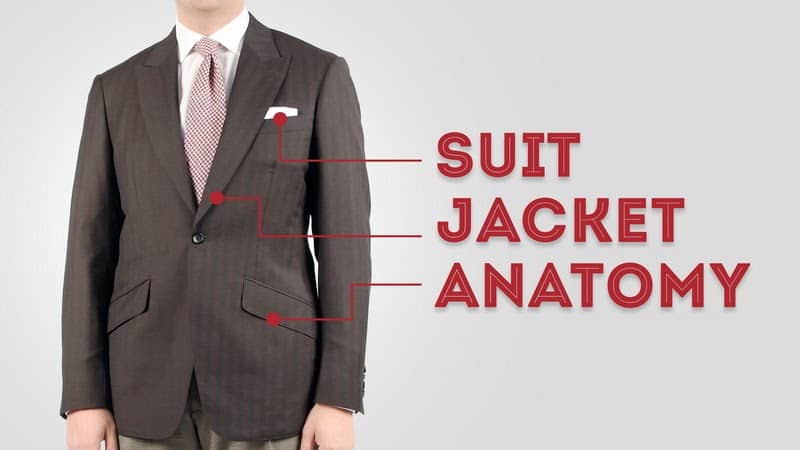

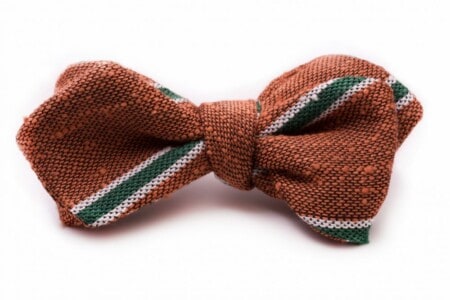
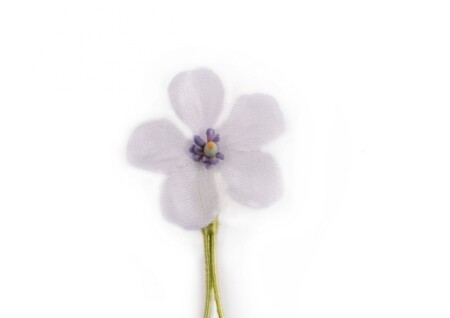
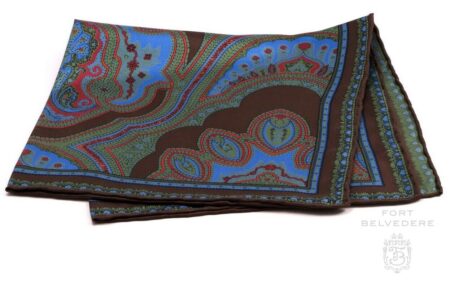
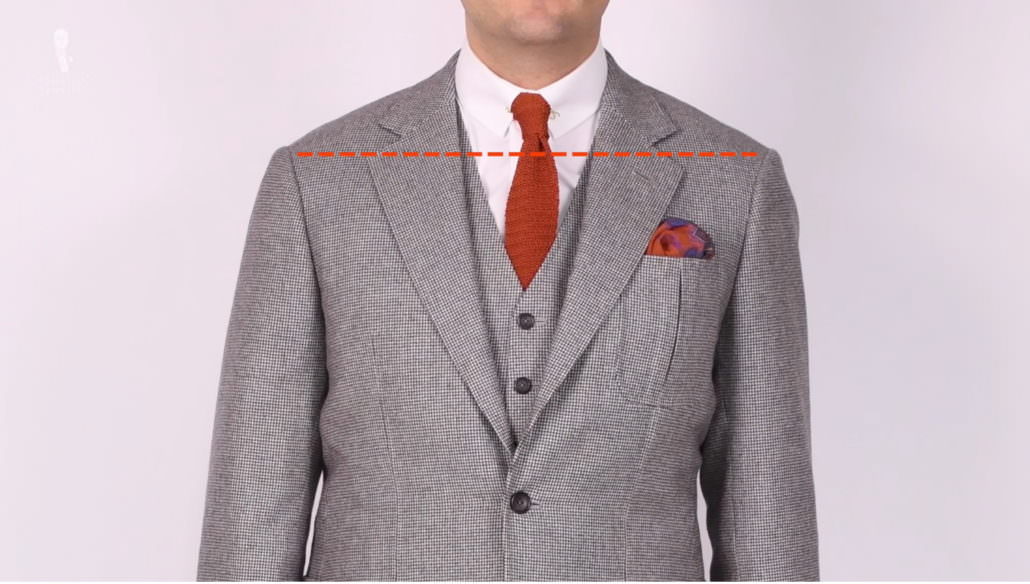
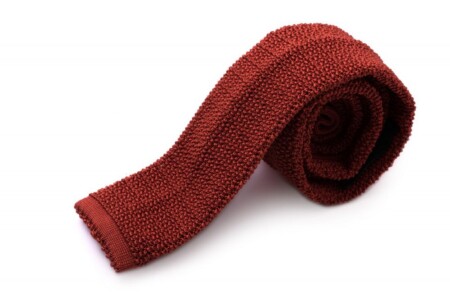
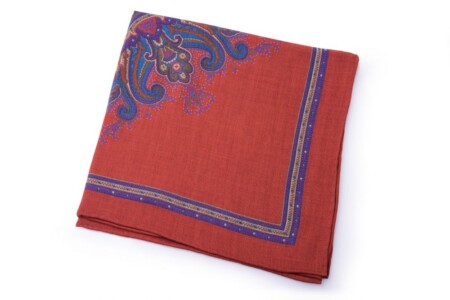
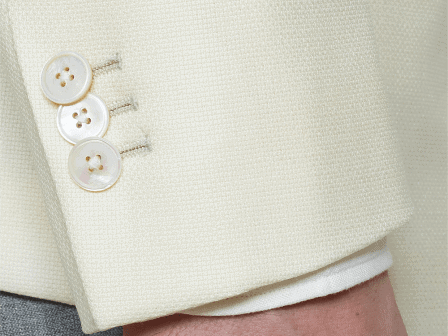

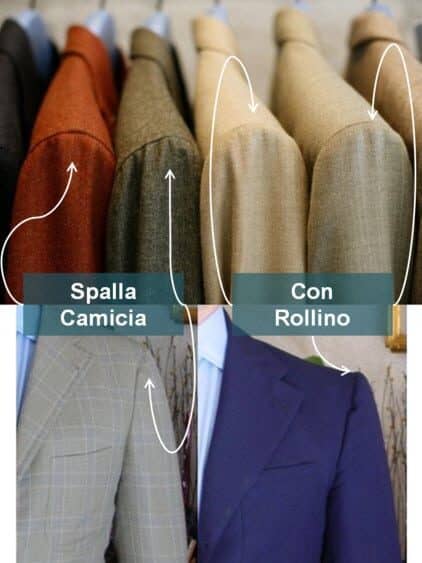
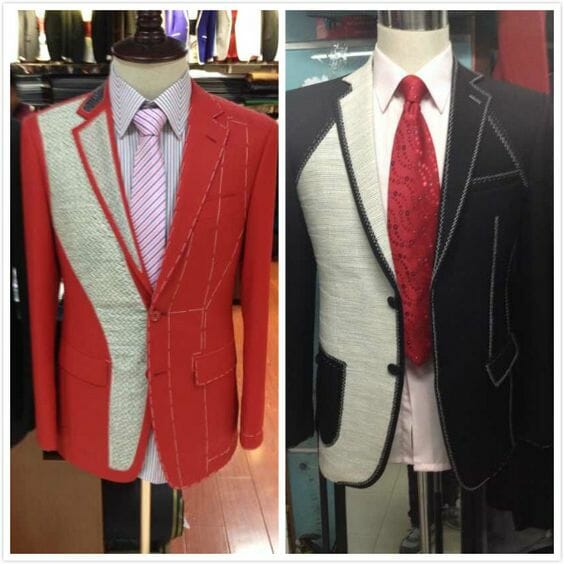
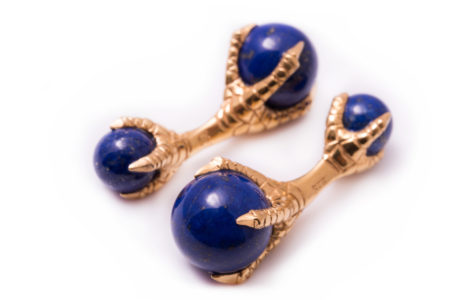
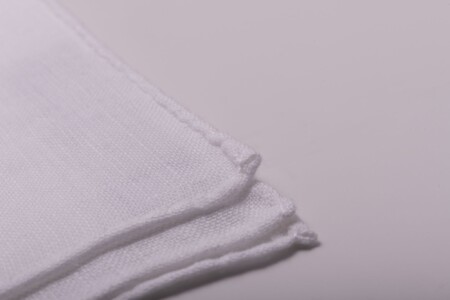
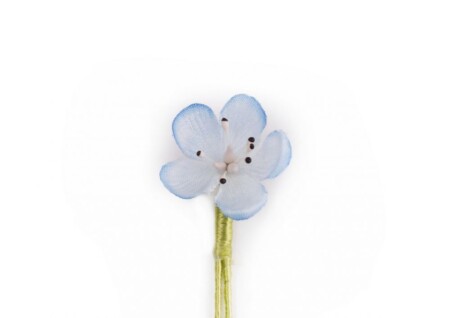
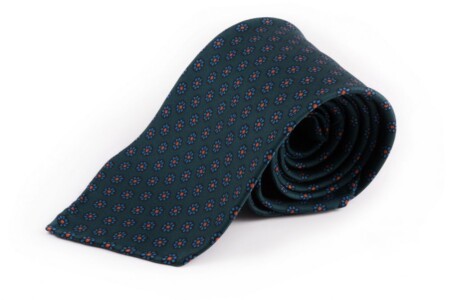
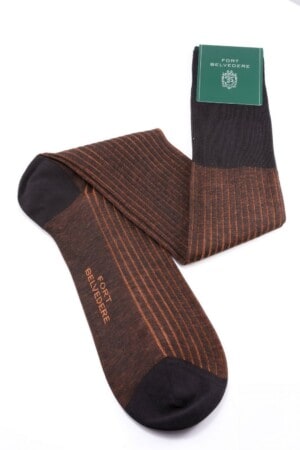
Thank you kindly for this wonderful piece. I greatly appreciate the detail of your pieces such as this. I have noticed that hats are making a comeback and think an article on men’s head wear/gear would be great. Regards
Thank you for reading, Patrick! We’ve got some articles on Panama Hats, Fedoras and how to choose the right hat for your face shape that should whet your appetite.
The most holistic and the best breakdown of suits i’ve read.
Thank you, Simon!
Excellent article!
Another great article!
The Pini Parma jacket looks terrible — single breasted, peak lapels and patch pockets. What else could go wrong?
TT
Interesting point, twotone. I’m a fan of Pini overall, but it is unconventional to say the least to see a patch pocket with peak lapels.They’re pushing the envelope there.
A wonderful and informative article; but having said that, I must take a small issue with the origin of the vent style. My teaching was that the difference in vent design has nothing to do with the cost of manufacture, but originated in English suits and country jackets (i.e. tweeds). Side vents were found only on suits for city wear. The design allowed for easy entry of the trouser side pockets with little rumpling of the jacket.
Originally, country jackets (usually tweed) were of a softer fuller cut and had no vent(s) at all. However, the act of sitting in a saddle caused the rear of the jacket to “ride-up” on the wearer; the single vent became the answer. It allowed the wearer more comfort and covered the saddle cantle and roll. Today, modern mass produced jackets may have a cost factor, but ask a tailor and he will say their most pricy jackets will be made at the customer’s request and they still have requests for both designs in suit jackets… just my 2ȼ.
Thank you for reading and contributing, Tim. Indeed, as I mention in the article “These likely originated to enable a jacket to sit well when riding on horseback”; thank you for presenting further details and elaboration on the connection. Also, just as you say, they’ve been unfortunately come to be associated with cheap suits, though I’m sure excellent single-vented jackets can be found at higher cost.
Well articulated and highly informative. Your coverage on lapels didn’t cover the “shawl lapel”. I really appreciate this piece. Makes a good read.
I suppose I am treating the shawl as more of a collar than a lapel type. That maybe semantics or my personal angle on it.
Showl lapel or collar ought to be reserved for Dinner Jackets.
Sadly, occasionally they apepar on business suits and confer on to the unaware wearer the cheapish air of provincial Tango teachers…
Another great GG article. Would also make a good video.
Simon (the other Simon)
Great article, this one!
The entire read on “Anatomy of a suit” was indeed interesting and truly informative I appreciate getting knowledge on the orgin of the functionality of various parts of the suit such as the lapel button to protect the wearer from enclimate weather and terminology like “drop” reference between jacket and pants thanks for a wonderful article.
It is our pleasure, Frank.
Again well done as always. many thanks.
Wonderful piece! Thoroughly enjoyable and interesting.
I’d like to challenge one bit of the article where it discusses how a lower buttoning point gives an impression of added height to the wearer due to an increase in lapel length. I’ve always been of the opinion that a higher buttoning point gives a greater sense of height. Here are two suits I found to make my case: https://i.imgur.com/XSXAxjs.png
Both are very similar in build. The first one, of course being a bit more modern in construction and having a higher buttoning point and gorge. Since the buttoning point is higher you do indeed have a shorter and slightly flatter lapel V shape that ends further up the body; this effectively means that less shirt and tie are visible and are more concentrated towards the top of the suit. I think that this functions to draw an individuals attention further up the wearer making them seem taller, much how like a pocket square or tie might. Another benefit of this placement I think is that since the buttoning point is in the absolute narrowest part of the suit and the lapels are shorter, this exaggerates even further the contrast between a narrow waist and a broad chest + shoulders which to me is a very desirable and attractive trait.
I am a young and short man and when I wear my suits that have this more modern button placement I feel like I look not only taller but more masculine/fit compared to when I wear a suit more like the right one in the image. Would love to hear what you have to say about this theory!
I have a question also; If a suit is half-canvased does that mean that the lower half or quarters are fused/glued and prone to the delamination you mentioned or does this behavior only really occur in the upper body?
Cheers!
Suit is a gentlemen’s code and it needs to be perfect in all aspects.It is an Elite attire and it describes ones personality too.
nicely written